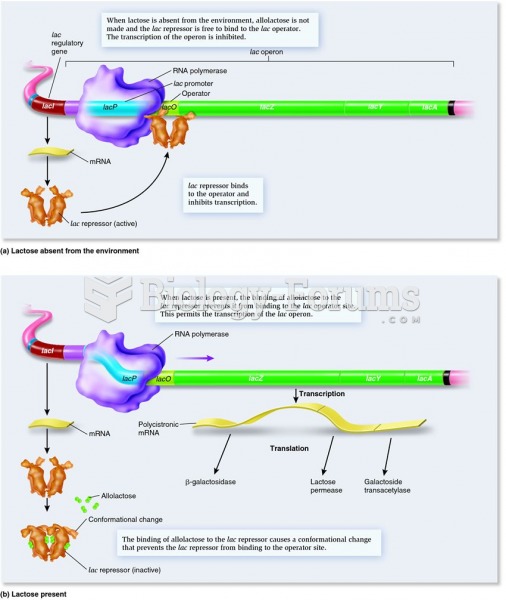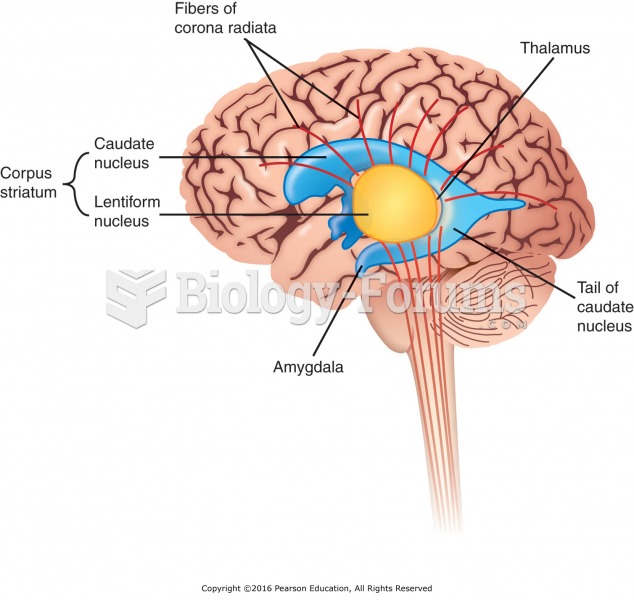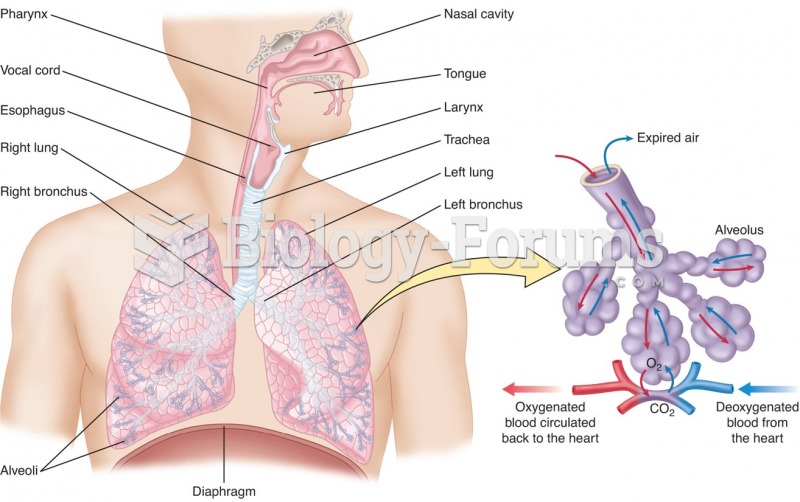This topic contains a solution. Click here to go to the answer
|
|
|
Did you know?
The familiar sounds of your heart are made by the heart's valves as they open and close.
Did you know?
Eat fiber! A diet high in fiber can help lower cholesterol levels by as much as 10%.
Did you know?
The horizontal fraction bar was introduced by the Arabs.
Did you know?
Asthma attacks and symptoms usually get started by specific triggers (such as viruses, allergies, gases, and air particles). You should talk to your doctor about these triggers and find ways to avoid or get rid of them.
Did you know?
Coca-Cola originally used coca leaves and caffeine from the African kola nut. It was advertised as a therapeutic agent and "pickerupper." Eventually, its formulation was changed, and the coca leaves were removed because of the effects of regulation on cocaine-related products.
 Negative control of an inducible set of genes: function of the lac repressor in regulating the lac o
Negative control of an inducible set of genes: function of the lac repressor in regulating the lac o
 The process of learning to read involves physical and socioemotional development, changes in the ...
The process of learning to read involves physical and socioemotional development, changes in the ...
 When the number of miles traveled is considered, drivers under 25 years of age and those over 70 are ...
When the number of miles traveled is considered, drivers under 25 years of age and those over 70 are ...




